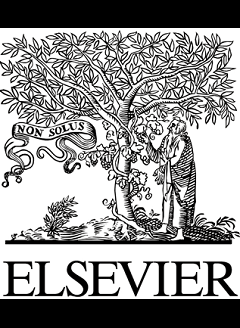دانلود رایگان مقاله تکرار بی کلام و مهارت های شناختی در کودکان با زبان کانارا در سنین مدرسه که دارای اختلال لکنت هستند یا نیستند – سال 2020


مشخصات مقاله:
عنوان فارسی مقاله:
تکرار بی کلام و مهارت های شناختی در کودکان با زبان کانارا در سنین مدرسه که دارای اختلال لکنت هستند یا نیستند
عنوان انگلیسی مقاله:
Nonword repetition and identification skills in Kannada speaking school-aged children who do and do not stutter
کلمات کلیدی مقاله:
تکرار غیر کلمه ای، شناسایی غیر واژه، حافظه کاری واجی، توانایی های واجی، کودکانی که لکنت دارند
مناسب برای رشته های دانشگاهی زیر:
روانشناسی
مناسب برای گرایش های دانشگاهی زیر:
روانشناسی بالینی کودکان و نوجوانان، گفتار درمانی
وضعیت مقاله انگلیسی و ترجمه:
مقاله انگلیسی را میتوانید به صورت رایگان با فرمت PDF با کلیک بر روی دکمه آبی، دانلود نمایید. برای ثبت سفارش ترجمه نیز روی دکلمه قرمز رنگ کلیک نمایید. سفارش ترجمه نیازمند زمان بوده و ترجمه این مقاله آماده نمیباشد و پس از اتمام ترجمه، فایل ورد تایپ شده قابل دانلود خواهد بود.
فهرست مطالب:
Abstract
Purpose
Method
Results
Conclusions
Keywords
1. Introduction
1.1. Phonological Working Memory (PWM)
1.2. Phonological working memory in adults who stutter
1.3. Phonological working memory in children who stutter
1.4. Purpose of the present study
2. Method
2.1. Participants
2.2. Stuttering diagnosis
2.3. Language, articulation, and short term memory
2.4. Nonword stimuli
2.5. Experiments
2.6. Nonword repetition task
2.7. Nonword identification task
2.8. Data scoring and statistical analysis
3. Results
3.1. Nonword repetition task
3.1.1. Number of accurate repetitions
3.1.2. Number of trials taken
3.1.3. Accuracy of repetition on the initial trial
3.1.4. Effect of nonword syllable length on the fluency of repetition
3.2. Nonword identification
4. Discussion
4.1. Group performance in nonword repetition
4.1.1. Digit span task performance
4.1.2. Fluency of nonword repetitions
4.2. Nonword identification performance differences
4.3. Study limitations
5. Conclusion
Funding
Declaration of Competing Interest
References
قسمتی از مقاله انگلیسی:
ABSTRACT
Purpose: The present study employed nonword repetition and nonword identification tasks to explore the phonological working memory (PWM) abilities and its interaction with speech motor control in school-aged children who do and do not stutter. Method: Participants were 17 children who stutter (CWS) (Age range = 7–12) and 17 age and gender-matched children who do not stutter (CWNS). For the nonword repetition task, the participants repeated sets of 2-, 3-, and 4-syllable nonwords (n = 12 per set). The participants silently identified a target nonword from a subsequent set of three nonwords (n = 12 per 2-, 3- and 4-syllable length) for the nonword identification task. The performance of CWS on the nonword repetition task was compared with the CWNS for the mean number of accurate repetitions, number of trials taken, number of accurate repetitions on initial trial, and number of fluent repetitions across the three-syllable conditions for the tasks. For the nonword identification task, the number of nonwords identified accurately by the two groups were subjected to analysis. Results: CWS were significantly less accurate on the initial production of nonwords and required significantly more number of attempts to repeat the nonword accurately. Further for the nonword identification task, CWS were significantly less accurate than CWNS in correctly identifying the target nonword. Conclusions: The present findings suggest that, in addition to limitations in PWM capacity, an unstable speech motor control system in CWS may lead to dysfluent speech.
1. Introduction
Stuttering is a multifactorial fluency disorder characterized by disruptions in the forward flow of speech (Bloodstein & Bernstein Ratner, 2008; Conture, 2001; Guitar, 2014; Yairi & Seery, 2011). Approximately 5 % of the preschool children tend to stutter at least once in their lifetime, with roughly 25 % of these children developing chronic stuttering that persists into adulthood (Yairi & Ambrose, 1999). Several theories have been proposed to explain the development of the disorder, with the most accounting for stuttering as a deficit in linguistic, psychological, and sensorimotor control processes (Conture & Walden, 2012; De Nil, 1999; Guitar, 2014; Kalvaram, 2001; Max, Guenther, Gracco, Ghosh, & Wallace, 2004; Neilson & Neilson, 1987; Postma & Kolk, 1993; Smith, 1999; Smith & Kelly, 1997; Vasić & Wijnen, 2005; Webster, 1990; Yairi & Ambrose, 2005). This has led several researchers to take a multifactorial approach to stuttering (Conture, 2001; Smith & Kelly, 1997).The multifactorial framework identifies stuttering as a speech motor disorder that interacts with multiple factors such as cognitive-linguistic processes and emotional systems (Sasisekaran, 2013; Smith & Kelly, 1997). Among the various cognitive-linguistic processes, the role of phonological processing in the manifestation of stuttering has been described extensively by theories such as the Covert Repair Hypothesis (Postma & Kolk, 1993) and model such as the EXPLAN (Howell, 2004). Among the various aspects of phonological processing, phonological working memory (PWM) has been attributed to the difficulties that persons who stutter experience in establishing/ maintaining fluent speech (e.g., Anderson & Wagovich, 2010; Anderson, Wagovich, & Hall, 2006; Byrd, Vallely, Anderson, & Sussman, 2012).


